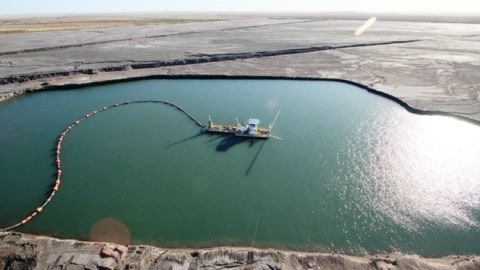The South Australian Government has projected a minimum opening water allocation of two per cent for the 2020-21 water year, and urged SA River Murray irrigators to plan for low water availability.
Despite this grim outlook, the SA Government clarified that this was only a projected minimum opening allocation to help irrigators prepare for the year ahead, with the actual opening allocation to be advised on 15 June 2020.
Latest rainfall outlook from the Bureau of Meteorology is currently more positive, which increases the prospects of improvements to water allocations as 2020 progresses.
In recognition of low water availability and industry feedback, the SA Government has changed the rules around carryover, which will allow irrigators to carryover any eligible unused allocations across multiple years, up to an entitlement volume of 20 per cent.
SA Minister for Environment and Water, David Speirs, said the projected opening allocation was a very conservative starting point.
“Due to continuing dry conditions across much of the Basin, water flowing into the River Murray System in 2019-20 has been about one-third of the long-term average, resulting in a low projected minimum opening allocation,” Mr Speirs said.
“It’s important to remember this is only a projected minimum opening allocation and water allocations will be updated regularly and if conditions improve, allocations will rise.”
Mr Speirs said that the SA Government had made a strong commitment to provide water users with more timely and accurate information around water availability to help with business planning.
“This is especially important in years when water allocations are likely to be restricted at the outset,” he said.
“In response to industry feedback, our government has modified carryover rules to help irrigators manage their allocations across multiple dry years.
“The rules change applies from 1 July 2020 and will give irrigators more flexibility and help with decision-making around future water use.”
River Murray Water Delivery Manager for the SA Department for Environment and Water, Jarrod Eaton, said water storages across the Murray-Darling Basin are low.
“The current volume in Murray-Darling Basin Authority controlled storages (2,726GL) is well below the end of March figure from last year (3,282GL), and significantly below the long-term average end of March figure (5,505GL),” Mr Eaton said.
“The current volume is one the key factors in determining the minimum opening allocation.”
Mr Eaton said it was therefore likely that all basin states, including South Australia, would receive much lower allocations of water at the start of the 2020-21 water year.
Water availability across the Basin is continually monitored. Projections are updated on a monthly basis until the start of the new water year. Once the new water year has commenced, updates are provided on a fortnightly basis based on advice provided by the Murray-Darling Basin Authority until such time as allocations reach 100 per cent.
“While recent rainfall in the Basin has been welcome, the inflow response in the Southern Basin has been relatively low. A sustained period of at least average rainfall will be required to sufficiently re-wet catchments, produce higher inflows and improve storage volumes,” Mr Eaton said.
“Recent inflows into the northern Basin and Menindee Lakes will not be sufficient to improve South Australia’s water availability. Under the current water sharing rules all of the water in Menindee Lakes remains a New South Wales asset unless the storage volume increases above 640GL.”
Public meetings originally planned for April 2020 had to be cancelled due to COVID-19 restrictions.
A webinar was held on 8 April 2020 to provide early information and help irrigators and other water users understand the water resource outlook and their water market options should dry conditions continue into 2020-21.
A copy of the webinar has been made available on the department’s website and information around the water outlook and allocation forecasts will be provided to River Murray water users regularly. The webinar can be accessed here.

















